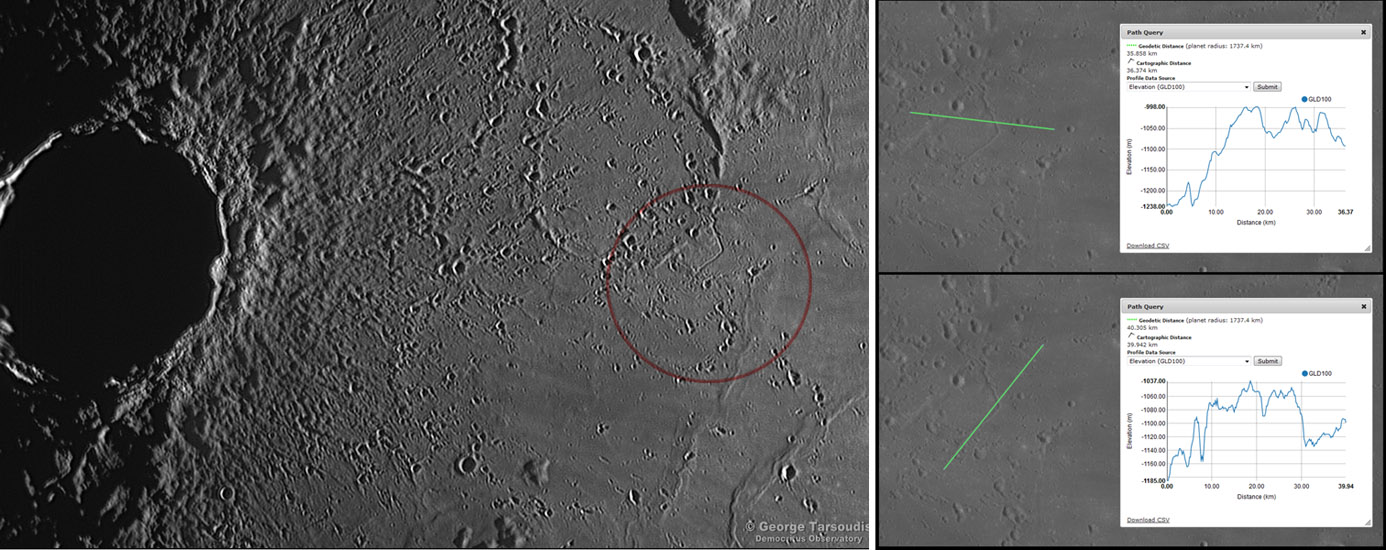November 2, 2023
Dome or Kipuka?
Originally published October 18, 2013

image by George Tarsoudis, Greece
With excellent technology and developing skills, amateur astronomers acquire increasingly stunning images of the Moon. And as more
and more use the altimetry tool in the LRO QuickMap the things seen and investigated on the Moon become more sophisticated. In this
example, George noticed a possible elevated area east of Copernicus near Stadius. There is a detectable change in slope bounding a
roughly circular patch outlined in red. To investigate this apparent rise George made topographic traverses across the circled area and
found that it is 80-100 m higher than the surroundings. There are two possible interpretations for isolated elevated mare areas - they
could be volcanic domes or older mare materials that happen to be elevated - such older relicts are called by the Hawaiian word
kipukas. As a dome, or because this is so large, a mega-dome, the surface should be the same age as the surrounding lava; as a
kipuka it would be older. This elevated area near Stadius has more pits than the surroundings, but they are mostly Copernicus
secondaries and could just be a chance cluster, so the elevated area may be the same lavas as the surroundings. The rille that crosses
the rise is also evidence that a volcanic vent occured in this area. The origin of this elevated area is not certain but George's image and
investigation revealed it.
Chuck Wood
Technical Details
Oct 13, 2013. SkyWatcher 14 inch @f/4.5, camera QHY5L-II, filter Red, barlow 3X.
Related Links
21st Century Atlas chart 17.
George's website
Yesterday's LPOD: Big Cut Dome
Tomorrow's LPOD: A Touch of Reality
COMMENTS?
Register, Log in, and join in the comments.



